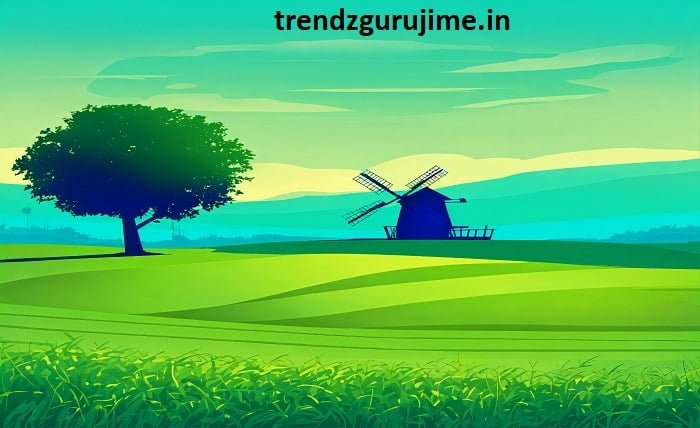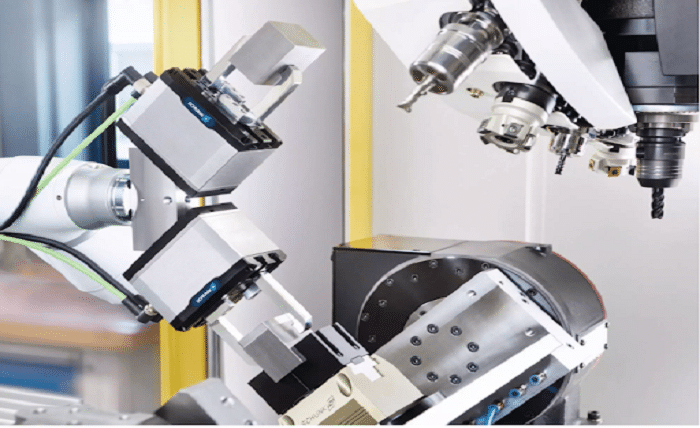In George Orwell’s “Animal Farm,” the windmill emerges as a potent symbol that encapsulates various themes, including Marxism, technology, revolution, and capitalism. Its significance extends beyond a mere construction project, reflecting the broader narrative’s exploration of power, ideology, and economic systems. This blog post delves into what the windmill symbolizes in the story, offering a detailed analysis of its representation of Marxist ideals, technological advancement, revolutionary promises, and capitalist exploitation.
1. The Windmill as a Symbol of Marxism
In the context of Marxism, the windmill symbolizes the revolutionary ideals of equality and collective effort. Initially, the windmill represents the promise of a classless society where the fruits of labor are shared among all. The animals’ belief in the windmill reflects their hope for a future where Marxist principles of communal ownership and shared prosperity are realized. However, as the story progresses, the windmill’s symbolism shifts, illustrating the betrayal of these Marxist ideals by the ruling pigs.
2. The Technological Symbolism of the Windmill
The windmill also symbolizes technological progress and innovation. In the story, the construction of the windmill is presented as a major technological achievement that will transform the farm and improve the animals’ lives. This symbolism highlights the belief that technological advancements can lead to greater efficiency and prosperity. However, the windmill’s failure to deliver on these promises underscores the limitations and potential misuses of technology when not accompanied by genuine ethical considerations and effective management.
3. The Windmill and Revolutionary Promises
The windmill is a key symbol of the promises made during the revolution. It embodies the vision of a better future and the ideals that motivated the animals to overthrow their human oppressors. At the beginning of the story, the windmill represents hope and progress, reflecting the revolutionary zeal that drove the animals to seek a new societal order. As the revolution falters and the pigs become more corrupt, the windmill’s symbolism highlights the disparity between revolutionary promises and the reality of the animals’ exploitation.
4. Capitalism and the Windmill’s Exploitation
In the context of capitalism, the windmill represents the exploitation and inequities inherent in capitalist systems. As the pigs consolidate power, they use the windmill project to extract increased labor from the other animals while benefiting themselves. The windmill becomes a symbol of how capitalist systems can perpetuate inequality, where the hard work of the many is used to enrich a select few. This exploitation is a central theme in the story, reflected in the windmill’s role as a tool for the pigs’ self-interest.
5. The Construction of the Windmill: A Marxist Perspective
From a Marxist perspective, the construction of the windmill symbolizes the idealistic vision of a society built on collective effort and communal ownership. The windmill is intended to represent the realization of Marxist ideals, where technology and innovation are harnessed for the common good. However, as the pigs betray these ideals and the windmill fails to deliver on its promises, the construction project becomes a symbol of the failure to achieve a true Marxist society.
6. The Windmill’s Failure and Technological Critique
The eventual failure of the windmill serves as a critique of the overreliance on technology without addressing underlying systemic issues. Despite the animals’ hard work and dedication, the windmill fails to bring the expected benefits, symbolizing the limitations of technology when used as a mere tool for progress rather than a genuine solution to systemic problems. The windmill’s failure highlights the dangers of placing unrealistic expectations on technological advancements.
7. The Windmill as a Symbol of Exploitation
As the windmill project progresses, it becomes a symbol of the exploitation faced by the working class. The pigs use the windmill to justify increasing labor demands on the other animals, who work tirelessly while receiving minimal rewards. The windmill thus represents the exploitation and alienation experienced under a system that promises equality but delivers only further oppression and inequality. This exploitation reflects the broader critique of capitalist and authoritarian systems in the story.
8. The Windmill and the Betrayal of Revolutionary Ideals
The windmill’s changing significance reflects the betrayal of the original revolutionary ideals. Initially a symbol of hope and progress, the windmill comes to represent the collapse of the revolutionary dream as the pigs become increasingly corrupt. Its ultimate failure symbolizes the replacement of one oppressive regime with another, illustrating the failure to achieve the promised utopia and the betrayal of the animals’ aspirations for a better society.
9. Comparing the Windmill to Real-World Technological Projects
Comparing the windmill in “Animal Farm” to real-world technological projects offers insights into the broader implications of technological advancements. Just as the windmill fails to live up to its promises in the story, many real-world technological projects can fall short due to corruption, mismanagement, or unforeseen challenges. The windmill serves as a cautionary tale about the limitations and potential pitfalls of technological progress when not accompanied by ethical considerations and effective implementation.
10. Lessons from the Windmill’s Symbolism
The symbolism of the windmill offers several valuable lessons about power, technology, and economic systems. It illustrates how revolutionary ideals can be corrupted, how technology can be misused, and how capitalist exploitation can perpetuate inequality. Understanding the windmill’s symbolism provides valuable insights into the complexities of societal change and the challenges of creating a just and equitable society. The lessons from the windmill’s symbolism remain relevant for analyzing power dynamics and economic systems in contemporary contexts.
Conclusion
The windmill in “Animal Farm” is a multifaceted symbol that represents Marxism, technological advancement, revolutionary promises, and capitalist exploitation. Its significance evolves throughout the story, reflecting the failures and contradictions of revolutionary ideals and the exploitation inherent in capitalist systems. By examining the windmill’s symbolism, readers gain a deeper understanding of the narrative’s critique of power, technology, and economic systems. The lessons from the windmill’s symbolism offer valuable insights into the challenges of creating a just and equitable society and serve as a reminder of the complexities involved in achieving societal change.
FAQ
1. What does the windmill symbolize in “Animal Farm”?
The windmill symbolizes various themes, including Marxism, technological progress, revolutionary promises, and capitalist exploitation. It represents the evolving nature of these concepts throughout the story.
2. How does the windmill represent Marxism in the story?
In the context of Marxism, the windmill initially symbolizes the promise of a classless society and collective effort. However, it ultimately reflects the corruption and betrayal of these Marxist ideals by the ruling pigs.
3. What role does technology play in the symbolism of the windmill?
The windmill represents the potential benefits of technological advancements, but its failure highlights the limitations and potential misuses of technology when not accompanied by ethical considerations and effective management.
4. How does the windmill critique capitalism in “Animal Farm”?
The windmill critiques capitalism by symbolizing the exploitation of the working class. The pigs use the windmill project to extract more labor from the other animals while benefiting themselves, reflecting the inequalities of capitalist systems.
5. What lessons can be learned from the windmill’s symbolism?
The windmill’s symbolism offers lessons about the nature of power, the limitations of technology, the exploitation in capitalist systems, and the betrayal of revolutionary ideals. These lessons provide valuable insights into the complexities of societal change and the pursuit of justice.





